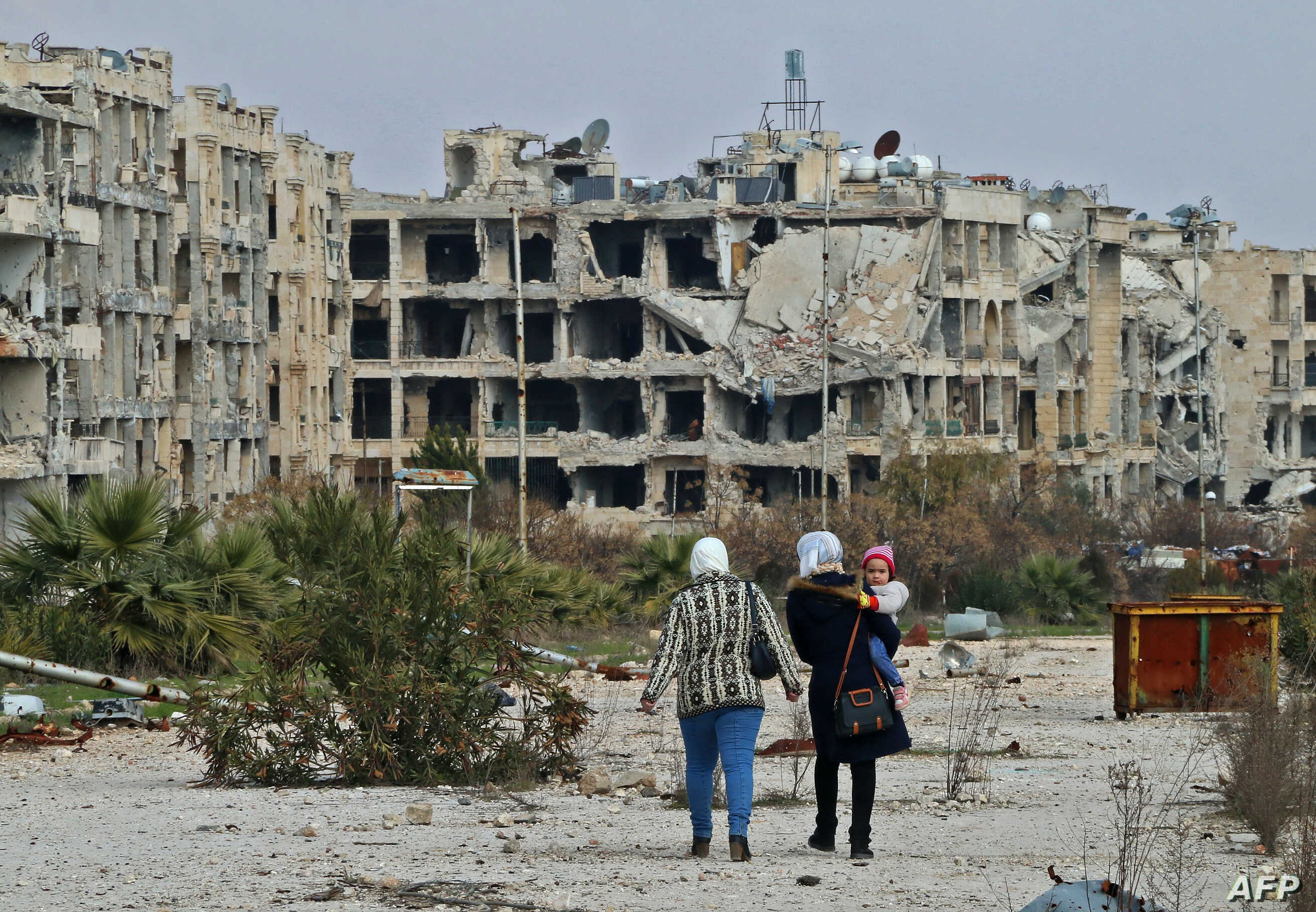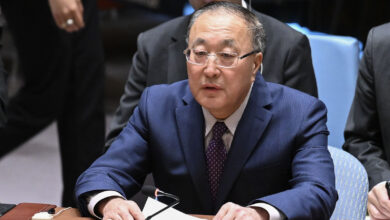
Syria’s prime minister who defected to the opposition said Tuesday that Bashar Assad’s regime was near collapse and urged other political and military leaders to tip the scales and join the rebel side.
The comments by Riad Hijab were his first public statements since leaving his post and fleeing to Jordan with his family last week. Hijab is the highest-ranking political figure to defect from President Bashar Assad’s regime.
“The regime is on the verge of collapse morally and economically in addition to cracks in the military,” Hijab told a press conference in the Jordanian capital, Amman.
Hijab is a Sunni Muslim from the eastern province of Deir el-Zour where rebels claimed to have shot down an army MiG-23 warplane on Monday. Hijab, who was not part of Assad’s inner circle, said the trip to Jordan lasted three days during which he was protected by rebels of the Free Syrian Army.
He said he felt “pain in his soul” over the regime’s shelling and other attacks on rebel strongholds as the government stepped up its military offensive. Activists say more than 20,000 people been killed in the struggle since March 2011.
“I was powerless to stop the injustice,” Hijab said, speaking in front of the rebel flag. He called on “honorable leaders” in Syria to defect as well.
“Syria is full of honorable officials and military leaders who are waiting for the chance to join the revolution,” he said, adding that Assad’s forces only control 30 percent of Syria.
“I urge the army to follow the example of Egypt’s and Tunisia’s armies — take the side of the people,” he added.
Hijab said he was now backing the rebels, but gave no clue on his plans. There had been speculation that he would travel to the Gulf nation of Qatar, which is one of the rebels’ main supporters.
A spokesman for outgoing UN peace envoy Kofi Annan said that Syria authorities have backed Lakhdar Brahimi as his successor. The spokesman, Ahmed Fawzi, said the next step was for Brahimi, a former Algerian foreign affairs minister and longtime UN official, to formally accept the post and resume efforts for a diplomatic solution to Syria’s crisis.
In Geneva, the UN said that its humanitarian chief has begun talks in Syria on a mission to boost international aid inside the war-battered country. Valerie Amos was to meet with Syria’s foreign ministry and the Red Crescent, which has been the pipeline for humanitarian supplies to Syrians caught in the civil war.
Jens Laerke, a spokesman for the UN Office for the Coordination of Humanitarian Affairs in Geneva, said Amos is on a three-day visit to the region. The UN estimates 2 million people in Syrian have been injured, displaced or facing problems securing food or other necessities. Also, more than 200,000 people have fled to neighboring countries including Turkey, Lebanon and Jordan.
In Lebanon, the militant Hezbollah group denied Tuesday that a man captured in the Syrian capital of Damascus and shown in a video released by the rebels was one of its members.
The video is the latest incident to reflect rising sectarian divisions in Syria’s vicious civil war, which has seen an increase in abductions of Shia Muslims who many rebel fighters perceive as supporting Assad. The regime is dominated by members of Assad’s Alawite minority sect, an off-shoot of Shia Islam. Sunnis, who are the majority in Syria, make up the backbone of the opposition.
The video purporting to show the captured Lebanese man followed another highly circulated rebel video Monday, showing the downing of the Syrian MiG and armed men later holding the captured pilot who ejected. Syria acknowledged a pilot had bailed out of a disabled plane but blamed the crash in Deir el-Zour on a technical malfunction.
In the video with the Lebanese captive, a man identifies himself as Hassane Salim al-Mikdad, and says he was one of 1,500 Hezbollah fighters sent to Syria on 3 August. The video was said to have been released by rebels and aired by Arab satellite TV Al-Arabiya on Tuesday.
“Most of those who entered were snipers,” said the captive, whose face showed bruises as three masked gunmen stood behind him. A man, who could not be seen, was asking the hostage questions.
The captive then says that Hizbullah leader Sheik Hassan Nasrallah gathered the men before they headed to Syria and told them that they should go to “support the Shia regime and the Shia army against Sunni gangs.” The authenticity of the video could not be independently confirmed.
Hizbullah, a Shia Muslim group, is a key backer of Assad’s regime. The Syrian opposition has repeatedly accused it of sending fighters to Syria, which Hezbollah denies.
Hizbullah issued a statement early Tuesday saying it “categorically denies that Mr. Hassane Salim al-Mikdad is one of its members.”
There have been several attacks and abductions in Syria of Shias from Lebanon, Iran and Iraq over the past months that were blamed on Syrian rebels. In May, Syrian rebels captured 11 Lebanese Shias shortly after they crossed from Turkey on their way to Lebanon.
Earlier this month, 48 Iranians were captured by Syrian rebels near Damascus. Rebels claim the Iranians include members of Tehran’s Revolutionary Guard and were on a “reconnaissance mission” in the Syrian capital. Iran insists the men were on a religious pilgrimage.
The Lebanese are apparently held to try to pressure the government in Beirut to show greater support for the Syrian rebels — which is unlikely because of Hezbollah’s strong influence and backing of Assad.
Also, many Iraqi Shias, streaming back to their homeland in the past month to escape the conflict in Syria, reported a rash of attacks against their community, apparently by Sunni rebel gunmen. In July, 23 Iraqi Shias were killed in Syria, some of them beheaded, according to the Washington-based Shia Rights Watch. In one gruesome case, the UN said an Iraqi family of seven was killed at gunpoint in their Damascus apartment.
The motives for the attacks on Iraqis are unclear. They may be revenge against any Iraqi because the Shia-led Iraqi government is seen as siding with Assad.
In other violence across Syria on Tuesday, activists reported clashes and shelling in the northern city of Aleppo, southern province of Daraa, suburbs of Damascus and the northwestern region of Idlib.
On Monday, gunmen abducted the correspondent of Iran’s Arabic-language TV al-Alam in the central city of Homs Ahmad Sattouf, his wife told The Associated Press. She said he was taken from his office and his whereabouts are unknown.
Sattouf becomes the third journalist to be abducted in Syria over the past three days. Three other journalists were killed over the weekend in Damascus and its suburbs.
State-run news agency SANA said one of its reporters was wounded Monday while covering clashes in Aleppo.




